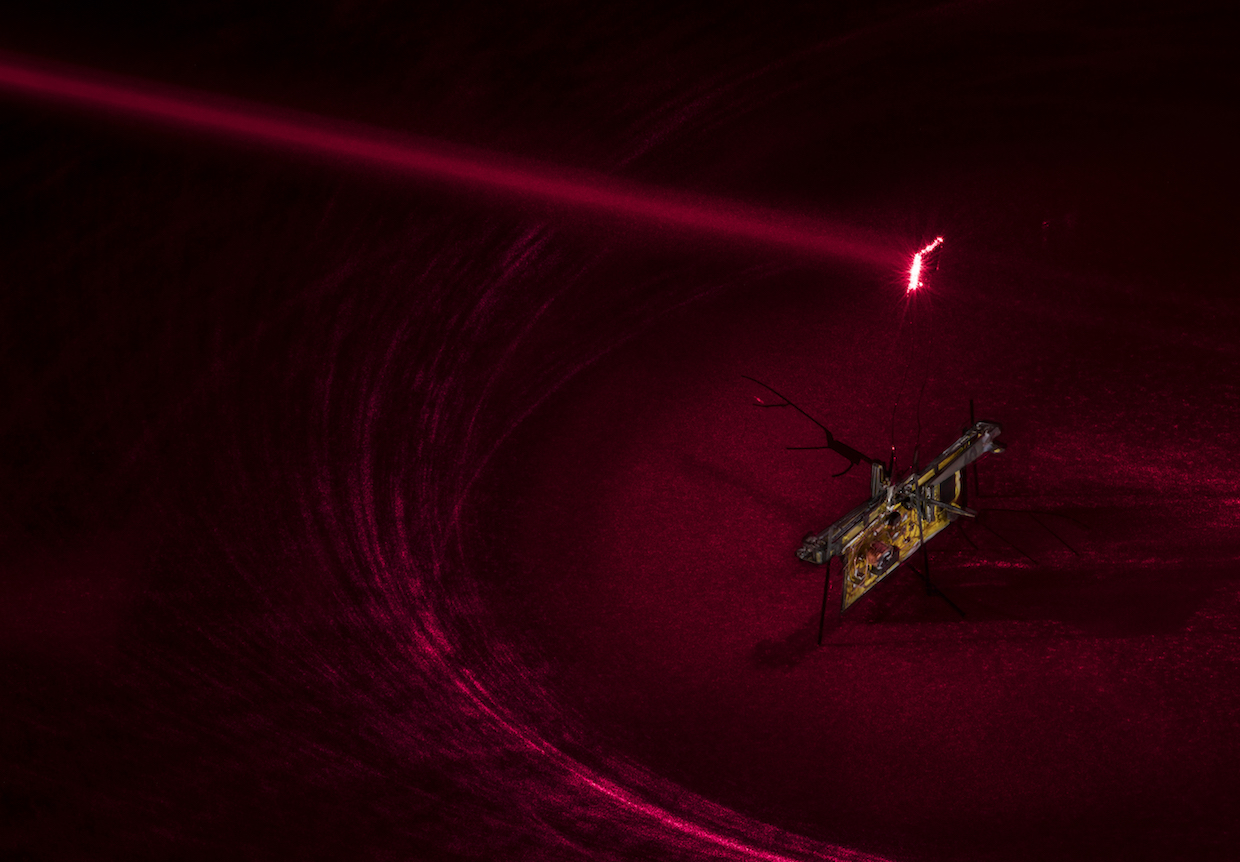The insect robot is powered by a laser beam.

Source: University of Washington
When creating any type of robotic devices, there is one important problem - the provision of these systems with power. Someone builds batteries in them, someone supplies power to the wires, but someone offers other options. Developers from the University of Washington at the International Conference on Robotics and Automation, held last week in Australia, showed a robot insect that is powered by a laser beam.
In principle, this is an interesting option, which allows you to save the robot from bulky batteries and time limits. The "insect" will fly as much as the laser beam is on. The scope of application of such a system is limited to these features, but this limitation is not so strong.
But the robot is free from such problems as a small radius of flight, low efficiency or, as mentioned above, a small time of work. The flying robot, which flaps its wings of energy, needs a lot, so the laser here is one of the best options.
The robot was named RoboFly, its prototype is RoboBee from Harvard. The size of the “robomukha” is approximately equal to the size of a normal bumblebee, but the mass is only 190 mg. The system is powered by an infrared laser, which is induced on a small photocell of 250 mW. In the video above, the laser is not induced, so as soon as the photocell moves out of focus, the robot stops working.
But according to experts from the University of Washington, this is not a problem. The main thing in this project is the development of the robot itself, capable of flying when a laser is pointed at it. With better guidance, developers can handle it. The wings of the robot are controlled by two piezoelectric servos, which, in turn, are controlled by a tiny microcontroller.
As for the radius of action of the robot, while the maximum distance that he managed to fly is about 1.23 m (in the open air). A more powerful thermal laser allows the system to operate at a distance of several tens of meters. If necessary, the system itself can be followed by the laser installation itself - after all, it is small and can be loaded onto any car.
The scope of the robot may be different. For example, farms, search for leaks in oil pipelines, scientific research in hard-to-reach regions, etc. Before the commercial application of the development, however, still far. Now scientists are working to improve the guidance system of the laser beams on their "robinome", in order to demonstrate a longer system operation.
Insect robots have long excited the minds of scientists. For example, in 2015, Festo introduced a robot ant, with six legs and piezoelectric mandibles. The "ants" have stereo cameras, a controller, this is a full-fledged robot.
In addition, the same company introduced a carbon fiber butterfly robot. The wings are controlled by servos, among electronic components there is a gyroscope, an accelerometer, a compass, two radio modules. Flight time, however, only 3-4 minutes.
Control is performed on a computer that receives and transmits signals from flying insects.
Scientists from the Howard Hughes Medical Institute, together with the Draper Laboratory, are developing a cyborg dragonfly, which will combine "miniature navigation, synthetic biology and neurotechnology." The dragonfly form factor was chosen for the simple reason that these insects are widespread throughout the world, and their class of flight is very high, this is, if I may say so, aces.
By the way, the energy for powering servos and all the dragonfly electronics is generated using photocells. Electronics also includes modules for autonomous control and navigation - it is also possible outside the controlled environment. The robot is controlled by the so-called optogenetic simulation. You can't call it practical yet, but over time, perhaps, scientists will improve it and insect-like robots will become something ordinary. The range of applications of such systems is very extensive.
All Articles